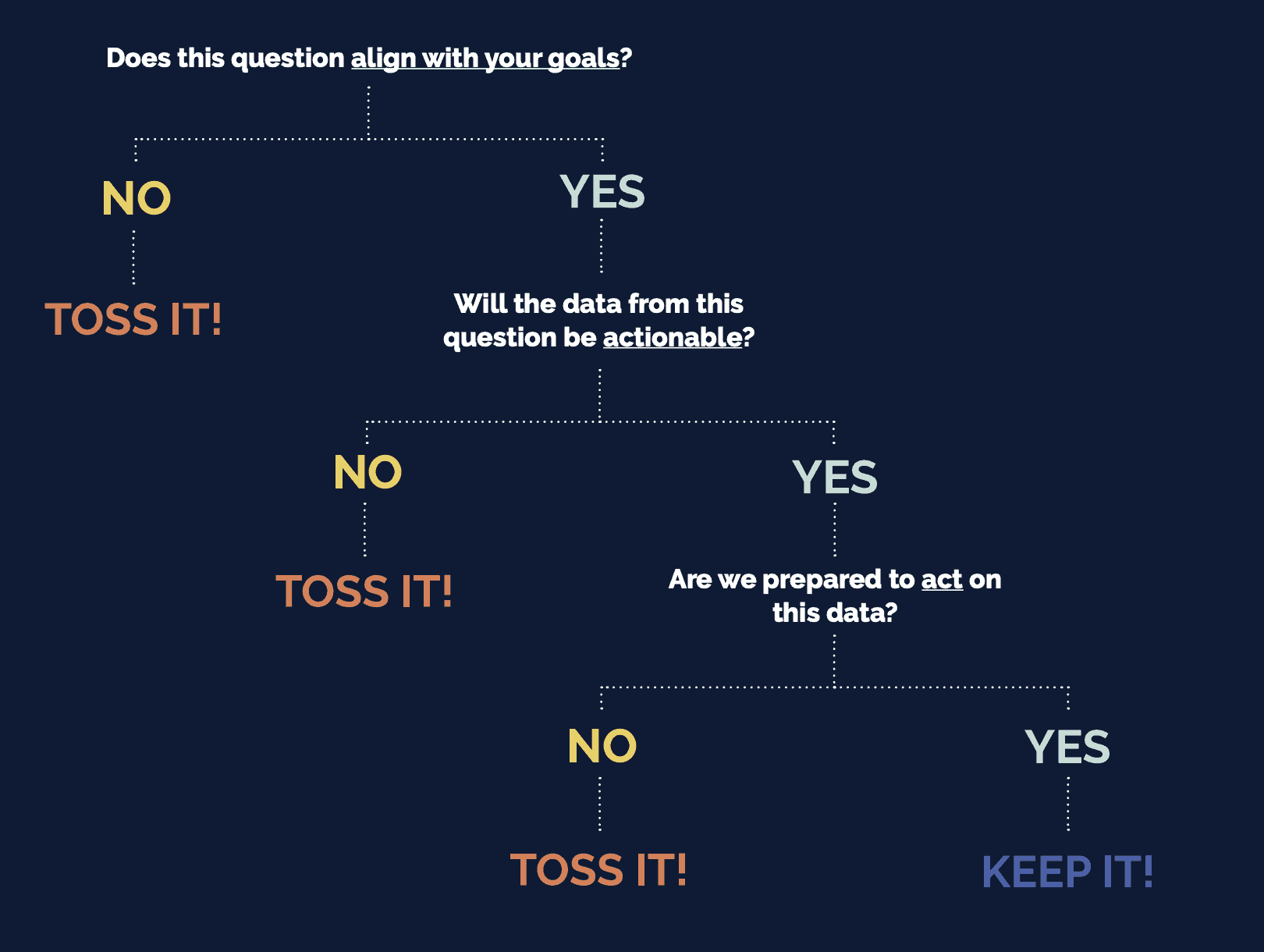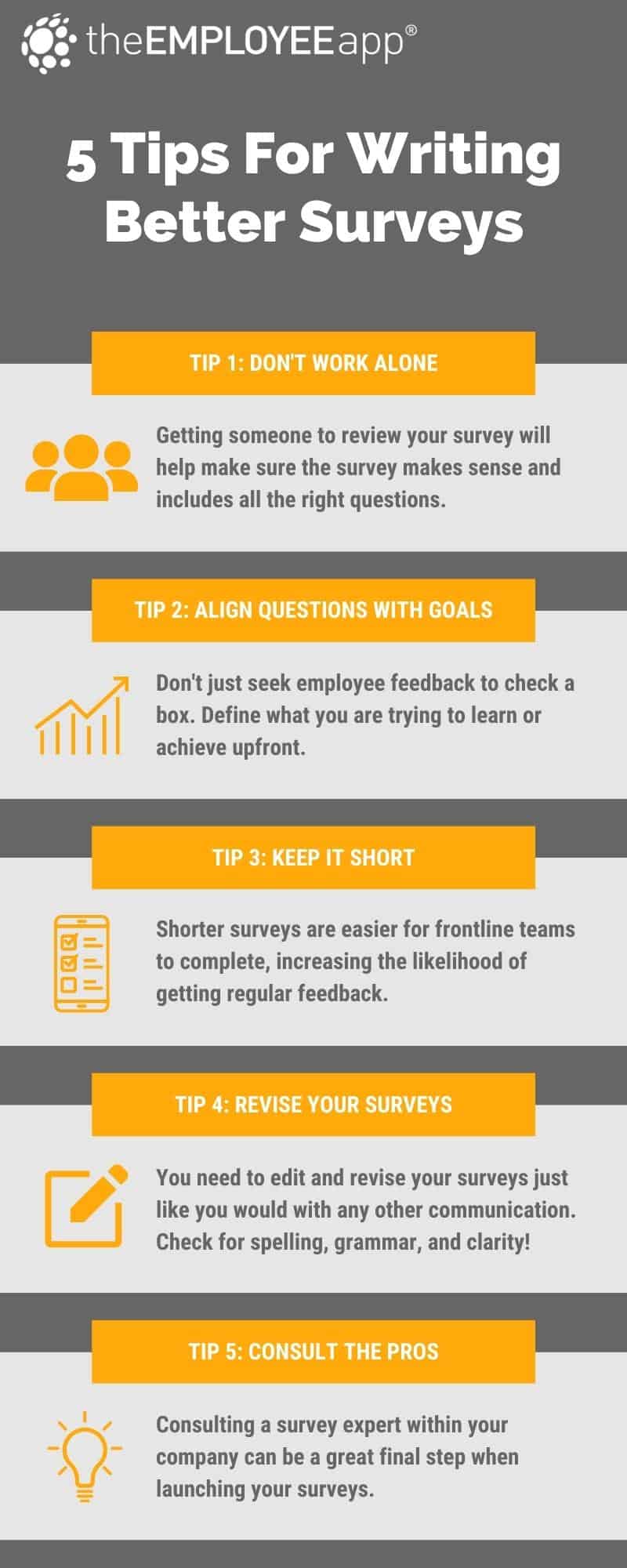Gathering employee feedback is a must these days. If you want to retain your workforce and improve employee engagement, you have to tap into the employee voice. That makes employee surveys one of the most important tools for a communicator…but not all communication professionals know how to write employee surveys.
You’re probably wondering:
- What type of survey should I use?
- What questions should I ask?
- What do I do with the feedback?
We’ll answer all of these questions, but let’s start with the basics.
What is an Employee Survey?
An employee survey is a set of questions that you share with your employees to learn more about a specific part of the business.
These surveys can range in length. Employee surveys can be:
- Long form surveys: These are more in-depth surveys consisting of more than 10 questions. Often, due to their length, they are used less often.
- Short form or pulse surveys: To be a pulse survey, it must be quick to complete. These shouldn’t take more than 5 minutes to complete, and they often consist of no more than ten questions.
- Polls: A poll lets you ask one single question, which is typically multiple choice.
And an employee survey can be about all kinds of topics, including:
- Engagement levels
- Wellness/wellbeing
- Communication preferences
- Net promoter score
- Employee feedback
- And more
What Are the Most Common Employee Surveys?
There are many types of employee surveys that companies use regularly. Let’s talk about the 5 most common types:
- Employee engagement surveys. Employee engagement has become an important KPI at many companies. They use it to gauge how motivated and committed employees are to their work and workplace. Engagement is tied to many different important business metrics (like retention, performance, etc.), so companies use this kind of survey regularly to get a pulse on the health of their culture.
- Employee satisfaction surveys. Engagement is not the same as satisfaction. Employee satisfaction is how happy employees are. Companies use these surveys to understand employee happiness with different aspects of their jobs and workplaces. This includes the work environment, culture, team, tools/equipment they have access to, DEI, and much more.
- Communication preferences surveys. Companies who invest in internal communication are likely using communication preferences surveys often. These surveys help you learn how employees want to be communicated with and what topics matter most to them.
- Employee performance surveys. This kind of self-evaluation is often used as part of the annual performance review process. It helps assess where an employee and team’s strengths and weaknesses are. These can also be helpful for gathering feedback on manager performance.
- Employee opinion surveys. Opinion or employee experience surveys are all about gathering specific employee feedback. Often, these surveys focus on all stages of the employee journey—starting with hiring and onboarding.
What Questions Should I Ask in an Employee Survey?
The types of questions you’ll ask really depend on the goals of your survey and what type of survey you are asking. For example, satisfaction surveys will include a lot of questions about how employees feel whereas employee opinion surveys might ask more open-ended questions where employees can describe their experience in more detail.
So, it’s more important to understand how to assess a good survey question rather than go off of a list of pre-baked questions.
Brilliant Ink has a great decision tree for evaluating employee survey questions:
Ask yourself if your questions align with your survey’s goals, if it will give you actionable data, and if you are prepared to act on that information.
From there, you can decide the best way to ask the question. To learn more about types of survey questions and how to pick the right one, download our guide to measurement and analytics.
5 Tips to Write Better Employee Surveys
Aside from asking the right questions, there are a few other best practices when writing employee surveys. Here are our top 5 tips:

- Don’t work alone.
- Align your questions with your goals.
- Keep it as short as possible.
- Revise your surveys like any piece of writing.
- Consult a survey or analytics expert.
What Do I Do With My Survey Results?
Once you have your results, you need to act on them. Survey fatigue mainly happens when employees are asked for their feedback and then never see anything come of it. So, part of your survey strategy needs to include a plan for:
- Reviewing the data in a timely manner.
- Finding the important actions that need to be taken based on the results.
- Sharing the results and your action plan with employees.
- Regularly reporting on your progress with those initiatives.
Employee Surveys: Key Takeaways & Best Practices
- Writing a good employee survey is like writing any other internal communication. That means they need to be carefully edited. This will increase engagement with your survey and avoid any confusion. And like good communications, you should always consider the underlying goals that inform why you are conducting a survey.
- Even if you write the best survey, it doesn’t matter if you don’t follow up. Why would you survey your people if you don’t plan to act on it?
- When you share your results, you always want to hone in on what’s relevant to your audience. And even more importantly, you should try to tell the story in the data. It’s not just about dumping all the results on your senior leaders. Why do you think a certain trend emerged? What has contributed to your employees feeling a certain way? And then, what can you do about it from a communication perspective?
- Even if you can’t address employee feedback right away, tell your employees you’re working on it. Share what the results were with them and that you’re seriously considering the best approach. And when you are able to make changes, remind them it was driven by their feedback and that you appreciate their transparency.
Subscribe To The theEMPLOYEEapp Newsletter
Comments are closed.




